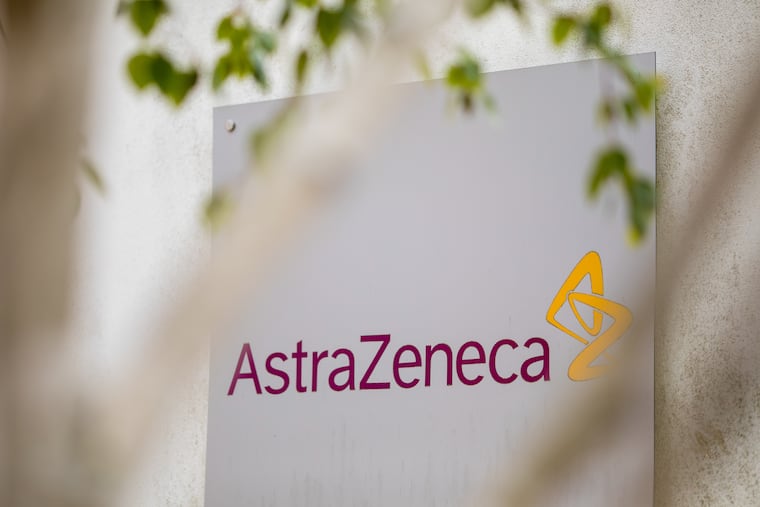Some asthma inhalers which once cost nearly $100 can be bought for $35 today — but Philly doctors want more help for patients
Patients with asthma still rely on other medications and treatments with eye-popping prices.

Some asthma inhalers now cost as little as $35 a month. But Philadelphia-area doctors say new price caps are not enough to combat the rising cost of managing the chronic condition in a city where the childhood asthma rate is more than triple the national average.
This spring, drug manufacturers AstraZeneca and Boehringer Ingelheim capped the prices of asthma inhalers at $35 a month and and a third, GlaxoSmithKline, has pledged to do so by next year. The move is the culmination of a years-long effort to rein in the cost of the lifesaving medical devices, which had skyrocketed to nearly $100.
“The fact they made this stance is a movement in the right direction — but not the end game,” said Tyra Bryant-Stephens, the medical director of the Community Asthma Prevention Program at Children’s Hospital of Philadelphia.
Patients with asthma still rely on other medications and treatments with eye-popping prices.
For example, Flovent, a brand-name preventive asthma drug especially useful for children because it’s easier for them to inhale, was pulled from the market earlier this year. The generic version is not covered by many insurers. That left doctors to wrangle with insurance companies to ensure patients got the care they need.
“We had parents screaming at us, ‘I need this medication, my kid needs the medication,’” said Jack Becker, an allergist with a private practice who is also on staff at St. Christopher’s Hospital for Children. “We were dedicating a significant amount of our staff time just to fight to get this through.”
In that context, inhaler price caps don’t feel like transformative change to Becker.
How did inhalers get so expensive in the first place?
In 2008, the Food and Drug Administration banned inhalers with chlorofluorocarbons, or CFCs, which damage the ozone layer, said Ana Santos-Rutschman, a health law professor at Villanova University who studies the affordability of medications. “The drug inside wasn’t changed, but the device was,” she said.
But the newer devices coming onto the markets were covered by patents that made it difficult to sell generic versions — leading to price hikes.
“Companies kept listing patents on the devices with the FDA that automatically blocked generics from coming to the market. That makes it very unappetizing for generic companies to come to market,” she said. And even when generics are available, pharmacy benefit managers that negotiate what drugs insurance plans will cover will not always cover generic medications, she said.
Studies showed that the high cost of inhalers led patients to ration their medications and even forgo them entirely because they couldn’t afford them, Santos-Rutschman said.
Bryant-Stephens recalled parents scrimping to afford medications for their kids’ asthma: medications to treat asthma attacks in an emergency, but also the more expensive drugs that prevent the attacks from occurring in the first place.
“Parents are making the best choices they can with limited incomes,” she said. “There are months they don’t have the meds — and it ends up with them having to make trips to the emergency room.”
Eventually, skyrocketing prices led to increasing political pressure for drug companies. “There were people in the U.S. paying $300 for inhalers sold for $9 in Germany,” she said.
Last year, the Federal Trade Commission announced they would begin cracking down on patents that stifled sales of generic drugs.
Helping patients keep costs low
Becker said the patients most likely to benefit from the caps are those with high health insurance deductibles, who must pay out of pocket for medications up to a certain dollar.
“For those who are uninsured or underinsured, for those who are working and have really high co-pays, this is going to be amazing,” said Bryant-Stephens.
But the price caps will not benefit all patients with asthma. The specific type of inhaler a patient needs may not be made by a company that’s instituted a price cap. Or an insurance plan might not cover inhalers made by those companies, Santos-Rutschman said.
Frequently, Becker said, he makes medical decisions for patients based on both their health needs and their financial situation.
“I say this tongue-in-cheek, but I mean it: I probably spend a portion of every patient visit being a financial counselor,” Becker said. “I have Plan A — what I think is best for the patient — but if they can’t afford it, or it’s not covered, I have to go to Plan B, C, or D.”
Santos-Rutschman said it’s crucial that federal authorities work to lower costs across the pharmaceutical industry, not just wait for certain companies to voluntarily institute caps.
“I don’t want to downplay it — this will help thousands of people. But self regulation never addresses everything, and not everyone is going to buy into this,” she said.